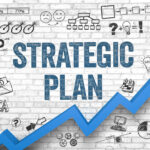In an earlier blog I wrote that businesses could learn a lot from non-profit organizations. One of the ways this happens is to remain Driven by Mission. But how exactly do you leverage your mission statement in practice? The secret to operationalizing a good mission statement is to translate it into action on three different levels – strategy, operations and performance measurement. Let’s examine the different ways to drive your mission on these different fronts.
1. Build mission into strategy
Using your mission statement as the foundation for developing strategy and high-level plans is step one. This will help you stay laser-focused on achieving your mission and avoid distractions or digressions that are not related to your purpose. Ensure that your mission is understood by the leadership team and all of those who contribute to strategic decisions, including your board of directors. The key is to build the mission into every strategic discussion and document.
You should ask the following questions when making decisions about alignment:
- Will this strategy or action support our core mission, vision and values?
- How does this new product or service align with our mission?
- How will this alignment differentiate us from our competitors?
- What will be the benefits for our customers and stakeholders?
The ‘how’ of your strategy is as important as the strategy itself. Once you are assured that the agreed-upon strategy is aligned with your mission, it will further guide how you carry out the strategy and can be built into tactical and operational plans and measures. Incorporate the mission statement into the tactical planning discussions and documents with your colleagues. Ensure the consultants, contractors, and partners that help with planning understand your raison d’être.
2. Build into daily operations
By incorporating your mission into company culture and daily operations you will further align everything the organization does. This means that your greatest resource — your people — will need to fully understand the mission and how it relates to their work. Consider using division, department and team charters to align their work and how it is accomplished, to the overall organizational mission.
If your mission centres around the customer’s experience, consider creating a customer charter. A customer charter provides a promise, is based on how the organization works and outlines what customers can expect. The charter then guides the teams that create the products and deliver services in their one-on-one engagement with customers.
If you are considering a partnership or business relationship with another company, ensure your mission is guiding the decision. For instance, if your mission speaks to corporate social responsibility, engaging a supplier with a record of unethical practices would be problematic. Your mission can be used to guide your procurement practices and can be built into your decision making.
Finally, when considering whether to invest in technology let your mission guide you. Seeking out innovative technologies can push a range of mission-driven initiatives forward, reduce waste, increase efficiency and ensure better products and services and most importantly, a better customer experience.
To be successful, all these initiatives require employee engagement and investment in your people and culture including training and development, feedback loops and performance management.
3. Build into performance measurement
Has focusing on your mission in your strategy and practices paid off? It is important to build in evaluation and measurement to know for sure. If you invest in your people, processes and technology as outlined above, you will have the tools to create metrics as well. To measure the success of the enterprise from the perspective of mission, you will want to develop key performance indicators that align with your strategies and operational plans. These may be about customer satisfaction, employee engagement, social responsibility, and financial results. You may gather feedback from staff, customers, partners as well as the general public. Do people know about your mission? Do they believe it represents their engagement with your company? Has it reinforced their decision to do business with your company?
Nonprofit organizations by their very nature are mission driven. They create strategic plans that drive operational and tactical plans. They are developing robust performance measurement plans to demonstrate how they are achieving their mission. As a small or medium business, you can take this approach as well. With everyone aligned there are no limits to what you can achieve.
Michelle Coombs is an energetic, innovative, and results-oriented leader with a proven track record for enacting change within organizations. If you would like to find out more, reach Michelle here.






